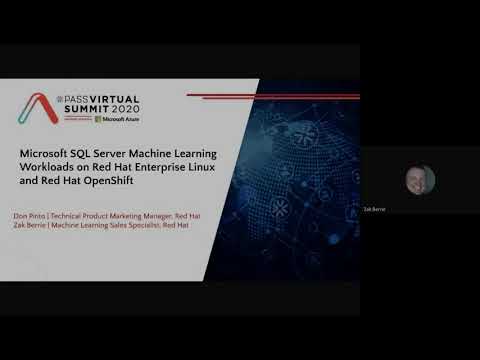Description:
Explore the integration of machine learning capabilities in Microsoft SQL Server running on Red Hat Enterprise Linux and Red Hat OpenShift in this 53-minute conference talk from PASS Data Community Summit. Learn how to accelerate the entire ML pipeline in-database, including data preprocessing, feature discovery, and model training without data migration. Discover the benefits of using containers for efficient ML model production and understand the role of Microsoft SQL Server Big Data Clusters on Red Hat OpenShift. Gain insights into the AI/ML lifecycle, key execution challenges, and fundamental architecture building blocks. Examine the advantages of SQL Server containers, in-database machine learning, and the RHEL Container Tools. Understand the importance of Kubernetes in production environments and how Red Hat OpenShift Kubernetes Platform enhances agility and scale. Explore the synergy between Red Hat and Microsoft technologies to deliver intelligent applications faster.

Microsoft SQL Server Machine Learning Workloads on Red Hat Enterprise Linux and Red Hat OpenShift
Add to list
#Conference Talks
#PASS Data Community Summit
#Computer Science
#Machine Learning
#Information Technology
#Linux
#Red Hat Enterprise Linux
#Windows Systems Administration
#Windows Server
#Microsoft SQL Server
#DevOps
#Containers
#Data Science
#Data Preprocessing
#Model Training